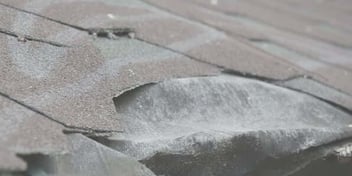- Home »
- Learningcenter »
- Hail damage atlanta roof
Hail Damage in Atlanta: What Does Hail Damage Look Like?
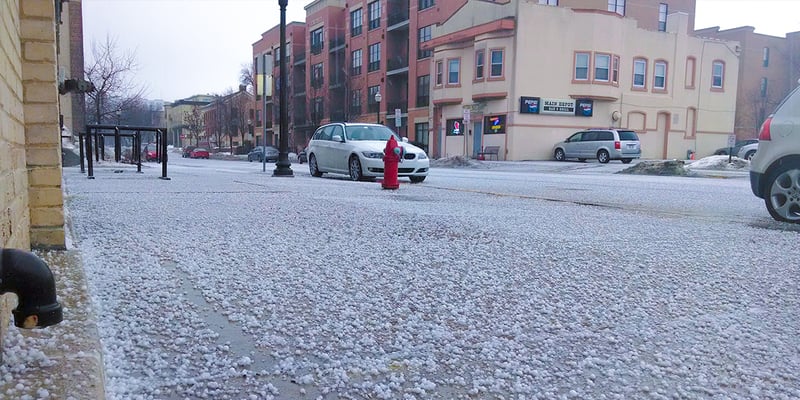
Hail occurs during thunderstorms when raindrops are carried upward by updrafts into the atmosphere, where they freeze. When the hailstones become heavy enough that the updraft no longer holds them up, they fall to the ground.
Peak severe thunderstorm season in Georgia is March, April, and May; in some years, a secondary peak occurs in September and October. The average size of hailstones in the Peach State is between one to two inches in diameter, which can do damage to your home and car and be quite dangerous to people and animals.
If there's been a recent hailstorm in the Atlanta area, it's essential to have your roof inspected to determine whether there has been any damage. Even hail smaller than an inch in diameter can cause damage to your roof, and it's important to address roof damage from hail right away to ensure the problem doesn't get more extensive and more expensive.
What Does Hail Damage Look Like on a Roof?
What hail damage will look like on your roof depends on the material your roof is composed of. Correctly identifying whether your roof has been damaged by hail requires a sense of what material your roof is made up of and how hailstones impact these different types of roofs.
1. Asphalt Shingles
If you are looking for hail damage on asphalt shingles, you'll want to look for black hail hits and marks that are not arranged in any discernible pattern. You can also look for granule loss which can expose the felt underneath.
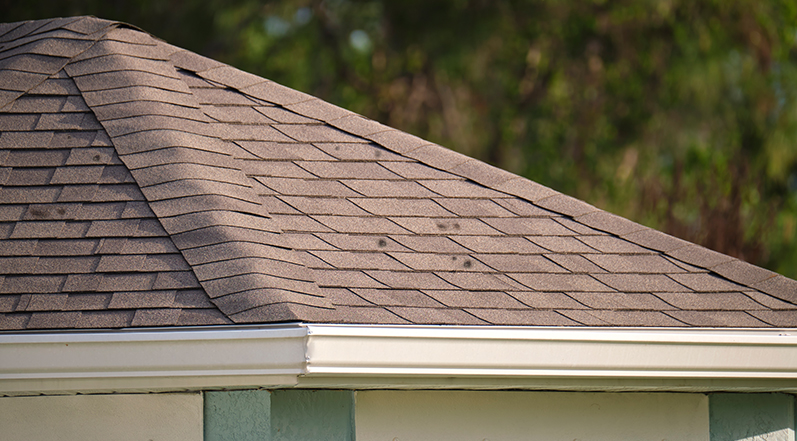
You also might notice that spots on your asphalt roof are shiny, and the damaged spots are soft to the touch.
2. Wood Shingles
If you have wood shingles on your roof and you're searching for hail damage, you'll also want to keep an eye out for damage that isn't arranged in an orderly pattern but instead randomly dispersed.
Hail can cause splits in wood shingles with sharp corners and edges and appear brown or orange. When you notice a split in your wood shingles and want to determine whether hail is the culprit, a split with little or no deterioration at the edges might have been caused by hail.
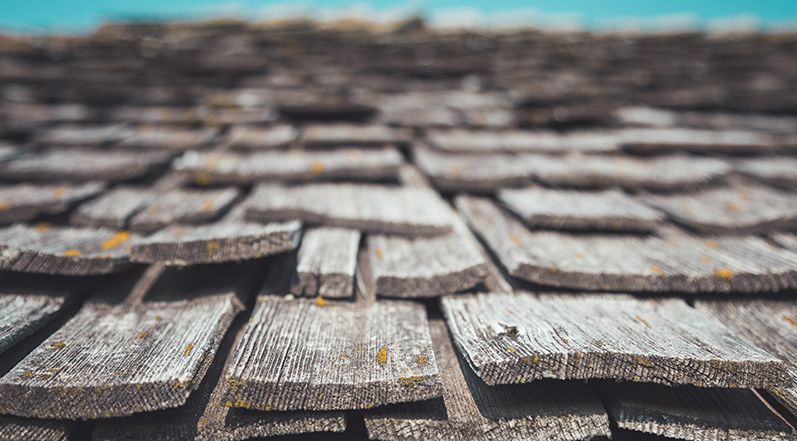
Another sign that your wood shingles are damaged by hail is that you can see dents or impact marks along the splits.
3. Metal Roofs
Metal roofs are more resistant to hailstone damage than one might expect. That said, large hailstones can dent or even puncture a metal roof.
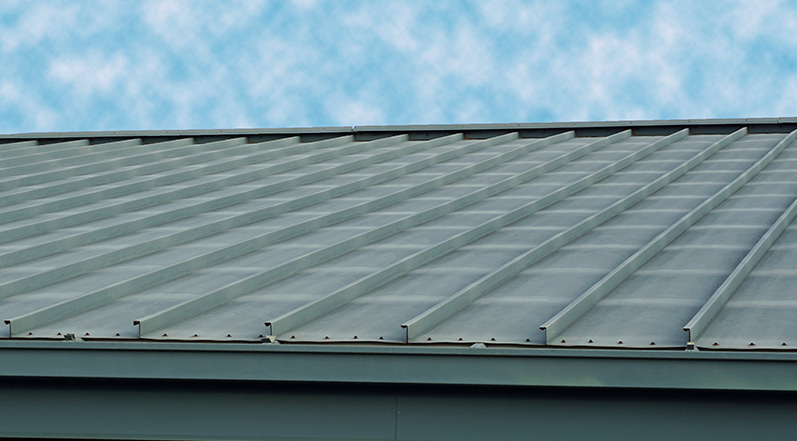
A dented metal roof is primarily a cosmetic issue that a professional roofer can typically repair without making structural improvements. However, a punctured metal roof can lead to roof leaks and must be repaired as soon as possible.
Hail Damage and Gutters
If hail has caused damage to your roof, there's a good chance it impacted your gutters as well. Take a look at your gutters and downspouts to see if you find any dents or dings.
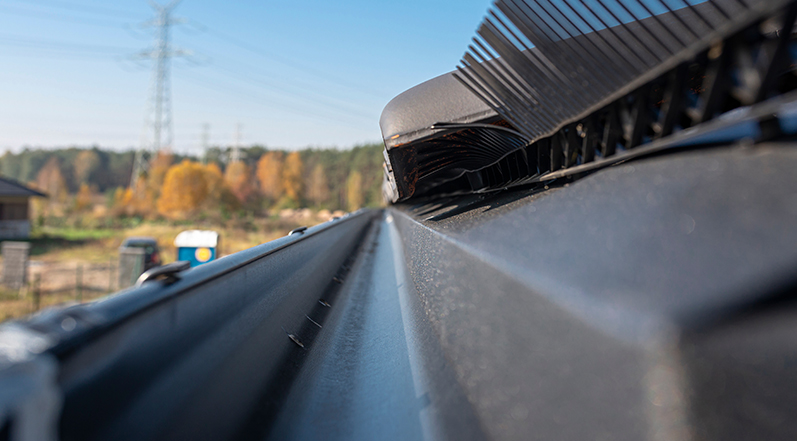
If your asphalt shingle roof was damaged by hail, you'd also notice granules in your gutters when inspecting them.
Asphalt granules can lead to your gutters clogging up, which can end up directing water toward your basement and foundation, along with other negative consequences.
Hail Damage and Siding
If there has been a large hailstorm that's damaged your roof, you'll also want to take a look at your siding for dents and damage.

On the other hand, if you notice damage to your siding before you've inspected your roof, it's an indication that you'll want to look for hail damage on your roof or hire a professional to do so.
What to Do If You Notice Hail Damage on Your Roof
If your roof has been damaged by hail, it's time to call a professional. A roof repair company will be able to determine how severe the damage is and communicate with you about the best course to take in repairing the damage. Some contractors will be able to help you navigate the insurance claim process.
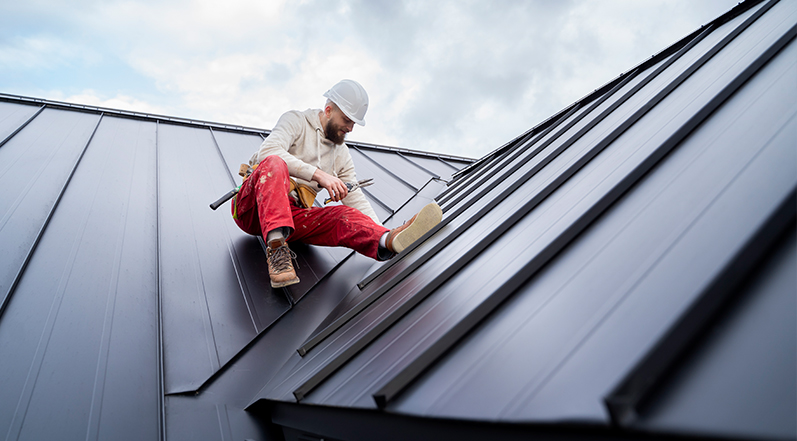
If a storm is severe enough, it can leave you in need of emergency roof repair. This guide covers what to do if you have a roofing emergency.
What Happens If You Don't Repair Hail Damage on a Roof?
If you notice hail damage on your roof, you'll want to make a plan to fix the problem immediately.

There are several potential risks when you don't deal with hail damage:
- ● Your roof can leak and lead to water damage in your house
- ● Mildew and mold can begin to develop around your house
- ● Your attic can become compromised in its ability to keep your house at a comfortable temperature, meaning your heating and cooling bills can increase
If you don't deal with hail damage immediately, the problems will likely become more prominent and more expensive. It's best to nip it in the bud as soon as you notice the damage.
Factors That Can Impact the Type and Degree of Hail Damage
The amount of damage that a hailstorm can do to a roof varies greatly. Let's take a closer look at some factors influencing how damaging a hailstorm can be.
1. Size and Density
As you might expect, the hailstone's size impacts the amount of damage a hailstorm can cause.
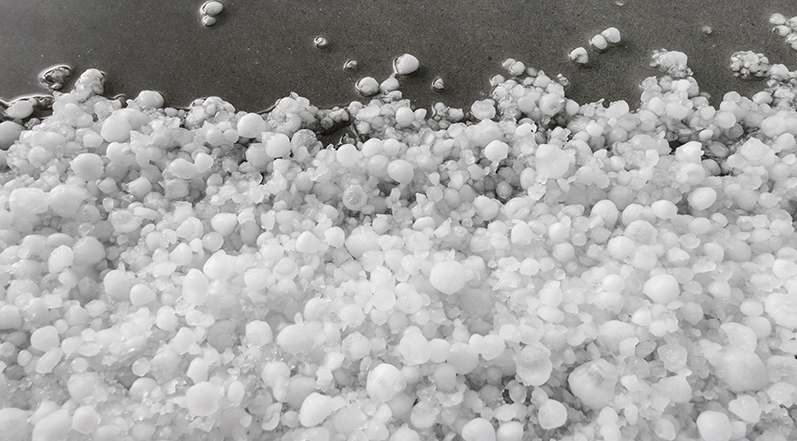
Some hailstones are as small as peas, while some storms could bring hail as big as a softball. Beyond that, the hail's density and shape can play a role in the degree of damage caused.
2. Wind
Both the speed of the wind and its direction influence the type of damage hail creates and its severity.
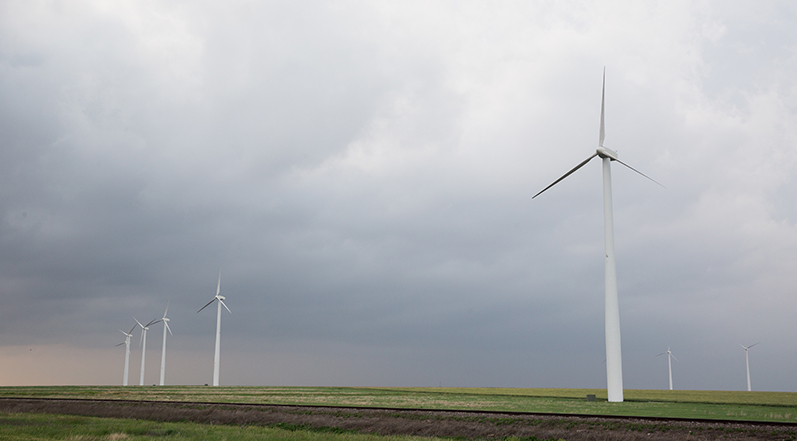
If the wind is strong enough, hail has been known to fall at a sharp angle and nearly sideways. It can break windows, dent the sides of your walls, and cause other damage to areas besides your roof.
3. Roofing and Building Materials
The ability of different building materials to absorb hail impacts varies. For instance, vinyl siding and wood shakes can crack due to hail, while aluminum siding, asphalt shingles, or gutters can become dented by hail.
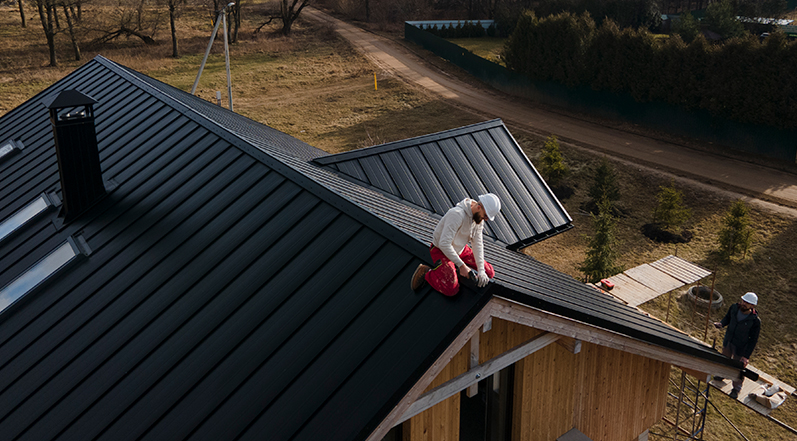
Beyond the materials your roof and home are constructed from, the age and condition can also be a factor in how damaging hail is. If a storm involves large, softball-sized hailstones, it's possible that they could entirely puncture your roof.
4. Barriers
Natural and artificial barriers can also impact how damaging a hailstorm is. These include adjacent homes, landscaping, fences, and tree cover.
How Fast Does Hail Fall?
The speed at which hailstones fall depends mostly on their size, the local wind conditions, the degree of melting, and the friction between the stone and the air.
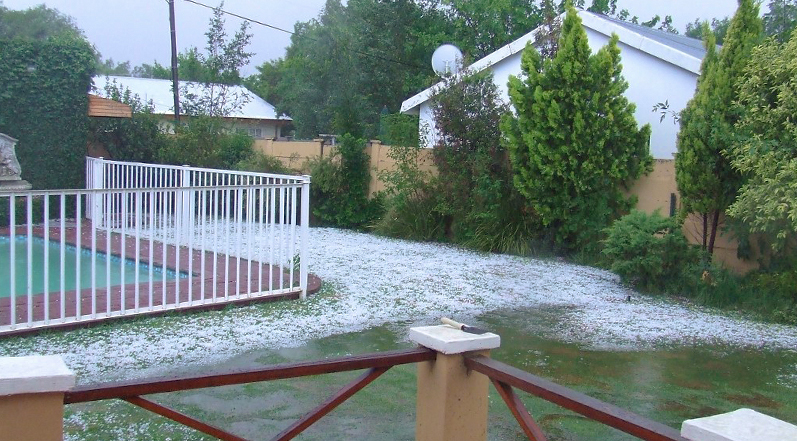
Small hailstones (less than an inch in diameter) typically fall between 9 and 25 mph. In contrast, According to the National Severe Storms Laboratory (NSSL), 1-1.75 inch hailstones often fall at speeds between 25 and 40 mph; this is the size of hailstone that is usually seen in conjunction with severe thunderstorms.
Large hailstones, with a diameter of between two and four inches, commonly have a fall speed between 44 and 72 mph.
Of course, a number of conditions can impact the speed at which hail falls. That being said, even small hailstones can move at an impressively quick speed, and very large hailstones exceeding four inches in diameter can fall at a speed that is faster than 100 mph.
How Large Does Hail Have to Be to Cause Roof Damage?
Even pea-sized hail can damage your roof. While several factors influence just how damaging hail can be, size being one of them, it's important not to assume that your roof is fine simply because the hailstones are smaller.
The most common damage caused by small hail is dents and dings in roofing materials, which shouldn't be left undealt with. Larger hail the size of golf balls or tennis balls can rip off gutters, shatter skylights, tear up exterior paint, and penetrate roofing shingles.
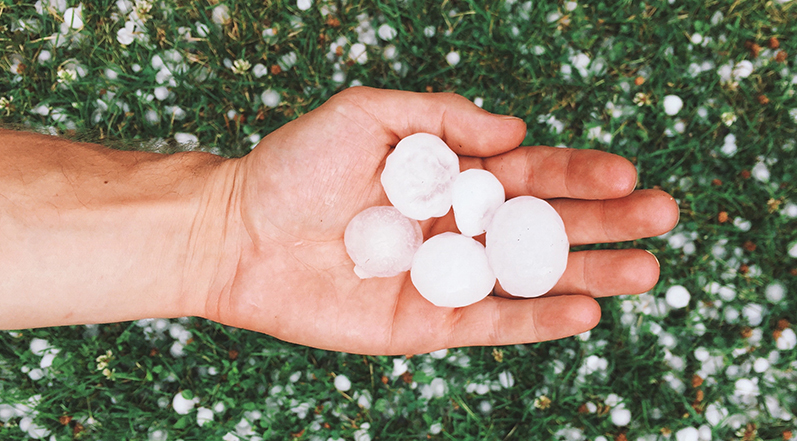
It's important to note that the size of the hail is just one factor determining how much damage it can cause. The velocity at which it falls and the angle at which it hits the roof also can affect how much damage it can do. When hail falls at a steeper angle, the chances of it causing more damage increase due to the force with which it hits the roof.
To put it into perspective, hail stones as small as 1/4 inch in diameter can cause denting in soft metals like aluminum if they fall at high enough velocities. So while hail may need to be over 1/2 inch in diameter to cause noticeable damage to your roof, other objects on your property can be damaged by smaller hail stones depending on the circumstances.
What to Do After It Hails
You'll want to look for and document any damage you find after a severe storm with hail rolls through. It's best to do this as soon as possible after the storm, as it can be useful to take photographs of the actual hailstones.
This documentation is important for your roof damage home insurance claim if you choose to make one.

You can look for several things to determine whether your roof has been damaged by hail. These include:
- ● Spots on the roof that appear black due to the shingle granules being knocked away
- ● Spots on the roof that are soft to the touch
- ● Spots on the roof that appear shiny
- ● The areas of damage appear in a random formation without any clear or orderly pattern
Of course, not everyone feels comfortable getting up on their roof to look for hail damage. Unless you feel confident in your abilities to inspect your own roof safely, it's generally advised that you have a professional roof repair company come out and take a look for hail damage.
Hail damage can be difficult to spot, so it's a good idea to have pros inspect your roof after a storm. Even if you do inspect your roof, it's possible that there is damage you missed that will go unnoticed until larger problems crop up months down the road.
Does Insurance Cover Hail Damage?
Homeowner's insurance commonly covers hail damage to a roof as well as other parts of your home, including windows and siding. That being said, you'll want to take a look at your homeowner's insurance policy to determine if you are covered in the case of hail damage.
It's also worth noting that you will have to reach the deductible before coverage kicks in, so you'll want to consider the cost of the repair and your deductible prior to filing a claim. It's possible that the repair will cost less than the deductible amount, in which case you generally don't want to file a claim.
How Soon After the Event Do You Have to File an Insurance Claim?
Though it is common for insurance companies to require that claims for hail damage roof repair be filed within one year after the event, it's a good idea to become familiar with the specifics of your particular insurance policy. It's possible that the timeline for when you need to file a claim will be longer or shorter than 12 months.
How Common Is Hail in Atlanta?
According to a study conducted by MoneyGeek using data from the Federal Emergency Management Agency's (FEMA) National Risk Index datasets, Georgia ranks at number fifteen on their list of states with the most hail risk for homeowners and renters.
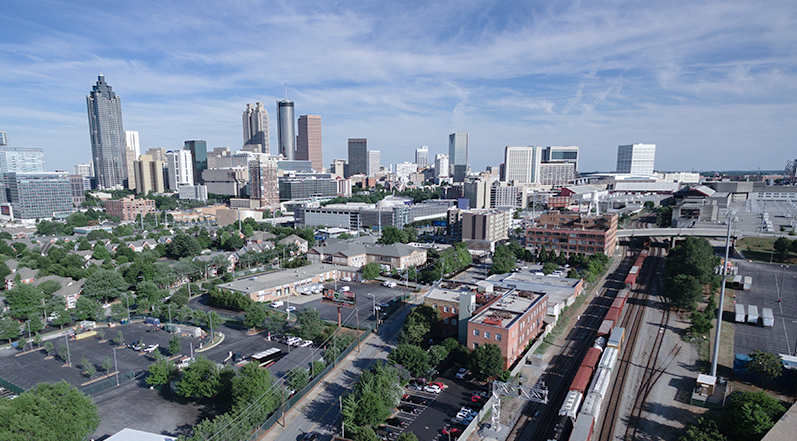
They found that hailstorms cost $40.7 million in building and population losses. According to this same data set, there are 63 hail events in Georgia each year.
Atlanta is no stranger to thunderstorms, with nearly half of the precipitation during the warm seasons coming in the form of thunderstorms. This means that damage can arise from strong winds, heavy rains, and hail.
If you live in the Atlanta area, it's vital to be prepared for heavy rains and thunderstorms. As with many things, prevention is the best cure when it comes to storm damage. It's prudent to make sure that your roof is well-maintained and regularly inspected. On top of that, you'll want to make sure there aren't any tree branches overhanging your home that could cause roof damage during a storm.
Was Your Roof Damaged By Hail in the Atlanta Area?
If your roof has been damaged by hail or another type of storm, you'll want to hire licensed professionals that have the knowledge and experience necessary to repair your roof. Sadly, there can be a number of roofing scams that crop up after storms in our area, where they advise homeowners they need unnecessary repairs or never finish the job. For this reason, it's essential to make sure you hire a licensed and insured roofing company.
At Colony Roofers, we take pride in offering the best customer care and affordable roofing services to people in the greater Atlanta area. No matter what your roofing needs are, we're here to help. Give us a call today if you have any questions, would like to set up a roof inspection, or are looking for a quote for your next roofing project.
 Call (678) 365-3138
Call (678) 365-3138

